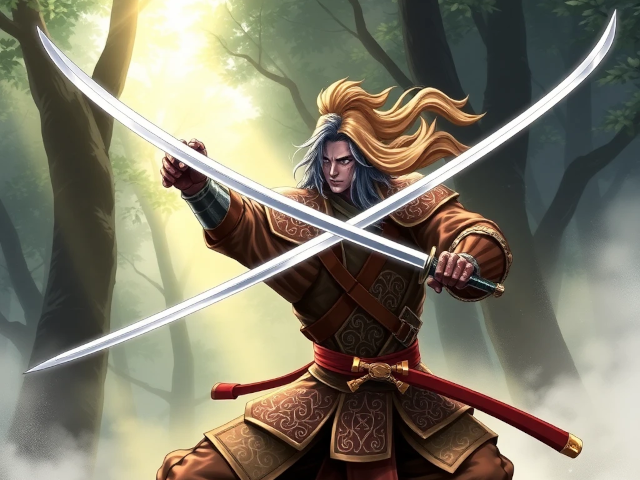これまでもモノづくり塾では、木工をやる人にCADの学習をすすめたり、AIの使い方を研究したりしてきました。これはAI時代、少子化や人口減少時代を見据えてやっていることです。今後、この考えを進めながら実践しなければならないと考えています。
私自身がプログラマーであり、ギター製作者やロードバイク製作者であり、建築や溶接もやるようになったという経緯を持っているので、その経験が反映されているわけです。当然、日々の塾活動においてもこの考えは反映されます。
二刀流の例
以下に二刀流の例を挙げます。
デジタル × アナログの二刀流
- 家を建てられるプログラマー(設計図をコードで管理する建築プログラマー)
- ロボットを作れる農家(農業用自動化システムも自作できる農家)
- AIを操れる土木作業員(現場の測量をAIで自動化する作業員)
- 溶接できるデータサイエンティスト(金属加工も熟練している)
- 木工できるWebデザイナー(家具を自分で作れるUIデザイナー)
- 回路設計できる料理人(厨房設備を自分でIoT化する料理人)
- プログラムを書ける大工(CNCや3Dプリンタを駆使して木材加工)
- 製図できる農業従事者(CADで温室を設計し自分で建てる)
- サーバー構築できる陶芸家(作品販売サイトも自分で運営)
- AIモデルをチューニングできる溶接工(現場の作業効率改善にも応用)
ホワイトカラー × ブルーカラーの二刀流
- 経営がわかる溶接職人(自ら工房を経営)
- コミュニティ運営ができる左官職人(イベント企画とSNS発信)
- プロジェクトマネジメントができる漁師(データを使って漁獲管理)
- 知財戦略を立てられる木工職人(作品を国際的に守る)
- 法務知識を持つ電気工事士(契約や規制にも強い)
- 論文を書ける自動車整備士(新しい修理手法を学術的に発表)
異文化融合型の二刀流
- 日本刀を打てるエンジニア(伝統工芸と先端加工の融合)
- 茶道を嗜むロボティクス研究者(和の精神と科学の統合)
- 農業とメタバースを掛け合わせる農村起業家(「バーチャル田んぼ」)
なぜ二刀流なのか
二刀流を目指す動機や意味について述べます。
1. AIが得意な領域と不得意な領域
- 得意分野
記憶、検索、最適化、パターン認識、コード生成、翻訳など「形式化できるタスク」 - 不得意分野
現場の臨機応変な判断、身体を使った精密作業、社会的・文化的背景に根ざした創造、倫理的判断
AIが強いのは「知の片翼」。もう片方の「身体性・現場性」は人間に残る。
つまり、この両方を行き来できる人材=二刀流が最も有利になる。
2. ホワイトカラー単体はAIに飲み込まれる
- 事務、設計、翻訳、プログラミングなど デスクワークのみ に依存すると、AIに代替されるリスクが高い。
- すでに「GitHub Copilot」や「Claude」のようなツールで、コード生成や資料作成の多くは自動化されつつある。
頭脳労働一本槍はリスク大。
実体験と結びつかない知識はAIと競合しやすい。
3. ブルーカラー単体もAI+ロボティクスに浸食される
- 製造ライン、物流、建設現場でもロボティクス+AIで自動化が進行中。
例:無人フォークリフト、自動溶接アーム、自動運転重機。 - ルーティン的・反復的な肉体労働は、テクノロジー導入の最初のターゲットになる。
身体労働一本槍もリスク大。
AIロボットは「休まない・速い・正確」という強みを持つ。
4. 二刀流人材はAIを「道具」として使い倒せる
- 例1: 農家 × ロボティクス
→ 自分で農業ロボットを改造・制御できる農家は、AIで収量予測+現場で即改善が可能。 - 例2: 大工 × プログラマー
→ 木工の知識をCADやCAMに反映し、自動加工+手仕事の仕上げができる。 - 例3: 土木作業員 × AIエンジニア
→ 測量・設計をAIで効率化しつつ、現場で即応できる。
AIを「競合」ではなく「相棒」にできるのが二刀流人材。
5. イノベーションは境界で生まれる
- 歴史的に新しい価値は、既存の専門分野の「境界領域」で生まれてきた。
例:生物学 × 情報科学 → バイオインフォマティクス
物理学 × 金融 → クオンツ取引 - 二刀流人材は「境界人」として、AI時代の新しい仕事を創り出せる。
二刀流は「代替されない価値」を生むポジション。
6. 教育・労働市場のシフト
- 一般的な教育は「専門一刀流」を前提にしてきた。
- しかしAIがその専門を肩代わりできるようになった以上、教育の目標は「AIを使って現実を変える人材」に変わる。
- その条件を満たすのが 「デジタル × アナログ」二刀流。
モノづくり塾は、一人でも多くの人が、得に若者が、二刀流を目指せる場所でありたいと願っています。
教育機関にお勤めの方、未来ある若者を持つ方、このままではいけないと思っている方。是非、一緒に二刀流を目指しませんか?5年くらい頑張ってみましょうよ。
関連記事:
余談ですが、プロとアマの違いについて書いておきます。
プロはそれでお金を稼ぐ人のこと、のような理解が広まっているように思いますが、そうではありません。何かをやろうと思ったときに「やりたい」で終わるのがアマです。それを「やらなければならない」に変換できるのがプロです。アマは逃げ道が作れますが、プロは逃げ道を作りません。精神性がまったく違うのです。お金の問題ではありません。
At Monozukuri Juku (ZIKUU), we have long encouraged woodworking students to learn CAD and have explored how to use AI. These efforts are made with the AI era, declining birthrate, and population decrease in mind. Going forward, we believe we must put these ideas into practice more deliberately.
My own background is as a programmer, a guitar maker, a road bike builder, and later also in architecture and welding. Naturally, that experience shapes my perspective. And of course, this mindset also informs our daily activities at the school.
Examples of “Dual-Skill” People
Digital × Analog Dual Skills
- A programmer who can build houses (an “architectural programmer” managing blueprints in code)
- A farmer who can build robots (designing their own automation systems for agriculture)
- A construction worker who can harness AI (automating site surveying with AI)
- A data scientist who can weld (skilled in metalwork too)
- A web designer who can do woodworking (a UI designer who builds furniture)
- A chef who can design circuits (IoT-enabling their own kitchen equipment)
- A carpenter who can program (using CNCs and 3D printers for wood processing)
- A farmer who can draft (designing greenhouses with CAD and building them themselves)
- A potter who can build servers (and run their own online shop)
- A welder who can tune AI models (applying them to improve on-site efficiency)
White-Collar × Blue-Collar Dual Skills
- A welder who understands business management (and runs their own workshop)
- A plasterer who can manage communities (organizing events and handling social media)
- A fisherman who does project management (using data for catch management)
- A woodworker who can build IP strategies (protecting their work internationally)
- An electrician with legal expertise (strong in contracts and regulations)
- A mechanic who can write papers (publishing new repair methods academically)
Cross-Cultural Fusion Dual Skills
- An engineer who forges Japanese swords (fusing traditional craft with advanced machining)
- A robotics researcher who practices tea ceremony (integrating Japanese spirit and science)
- A rural entrepreneur combining farming and the metaverse (“virtual rice fields”)
Why Dual Skills?
1. Areas where AI excels vs. struggles
- Strengths: memory, search, optimization, pattern recognition, code generation, translation—tasks that can be formalized.
- Weaknesses: adaptive judgment on site, fine physical work, creativity rooted in social/cultural context, ethical judgment.
AI represents one wing of knowledge. The other wing—embodiment and hands-on field experience—remains with humans.
Those who can cross both sides—the dual-skilled—will be most advantaged.
2. White-collar alone will be swallowed by AI
Relying only on desk work (clerical tasks, design, translation, programming) carries a high risk of replacement.
Already, tools like GitHub Copilot or Claude automate much of coding and document drafting.
Knowledge disconnected from hands-on experience competes directly with AI—and loses.
3. Blue-collar alone will be eroded by AI + robotics
Automation is spreading in manufacturing, logistics, and construction.
Examples: unmanned forklifts, automatic welding arms, self-driving heavy machinery.
Routine, repetitive labor is the first target for technology.
AI robots are strong because they never rest, are fast, and precise.
4. Dual-skilled people can fully leverage AI as a tool
- Farmer × Robotics → A farmer who can modify and control robots can predict yields with AI and immediately improve on-site.
- Carpenter × Programmer → Woodworking knowledge can be reflected in CAD/CAM, allowing automated processing plus hand finishing.
- Construction worker × AI Engineer → Surveying/design made efficient by AI, while responding instantly on site.
Instead of seeing AI as a “competitor,” dual-skilled people can make it a “partner.”
5. Innovation happens at boundaries
Historically, new value has emerged at the boundaries of existing fields.
Examples:
- Biology × Information Science → Bioinformatics
- Physics × Finance → Quantitative trading
Dual-skilled people, as “boundary crossers,” can create entirely new jobs in the AI era.
Dual skills generate irreplaceable value.
6. Shifts in education and labor markets
Conventional education has assumed “single-specialty expertise.”
But since AI can now shoulder much of that expertise, education must shift to cultivating people who use AI to change reality.
That condition is fulfilled by “Digital × Analog” dual-skilled individuals.
At Monozukuri Juku, we want to be a place where as many people as possible—especially young people—can pursue dual skills.
If you work in education, if you are raising the next generation, or if you simply feel things cannot continue as they are—why not aim for dual skills with us? Let’s commit five years to it.
Related Articles
- What young people should know about the “2030 Problem”
- What parents of young people should know about the “2030 Problem”
- The unemployment issue in the AI era
A Side Note: The Difference Between Professionals and Amateurs
There seems to be a common view that professionals are simply “those who earn money from it.” But that’s not the essence.
When an amateur decides to do something, it ends with “I want to.”
A professional transforms that into “I must.”
Amateurs create escape routes; professionals do not.
The mindset is completely different.
It’s not about money—it’s about commitment.


「ZIKUUの「二刀流」という考え方」への7件のフィードバック